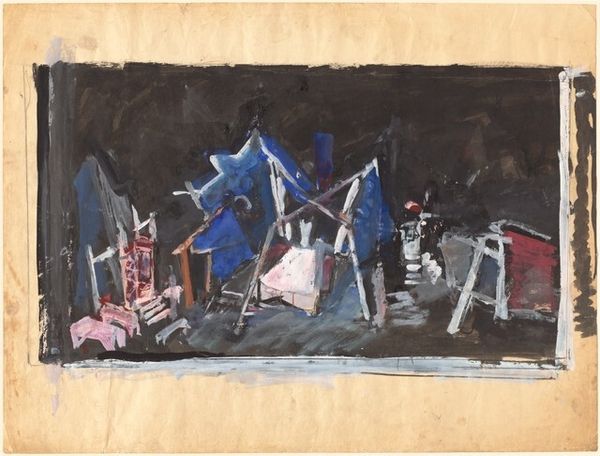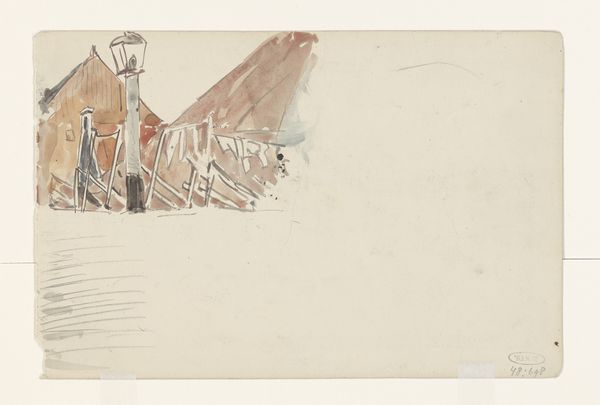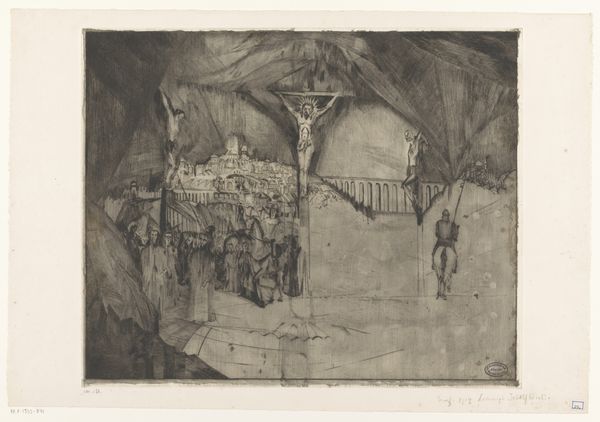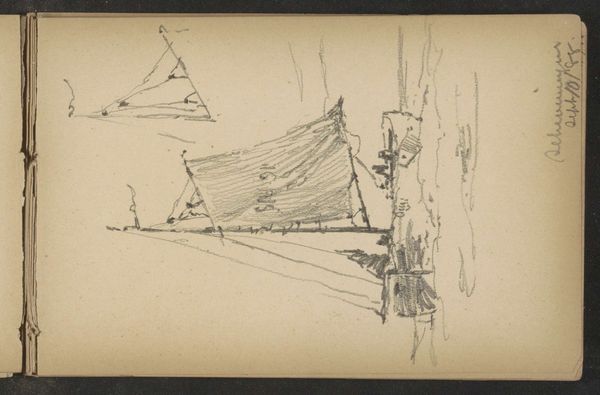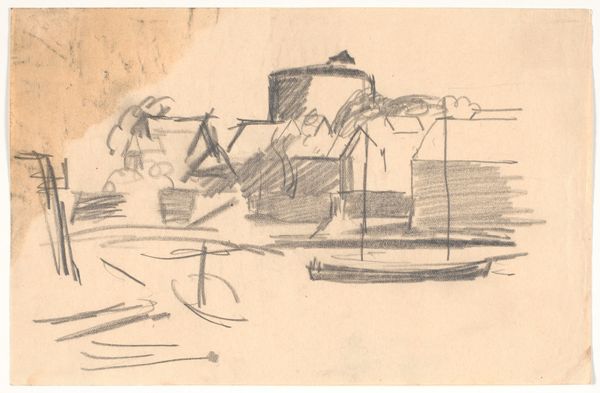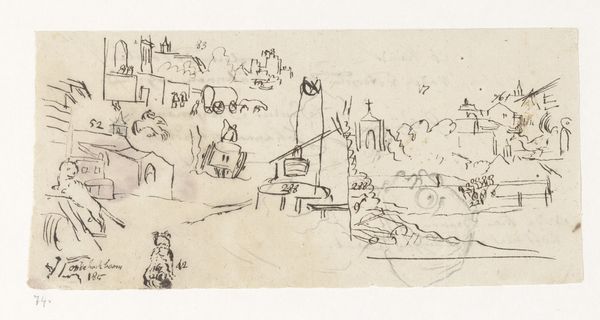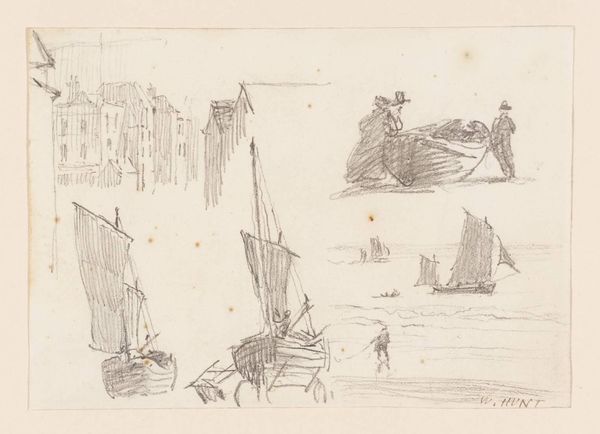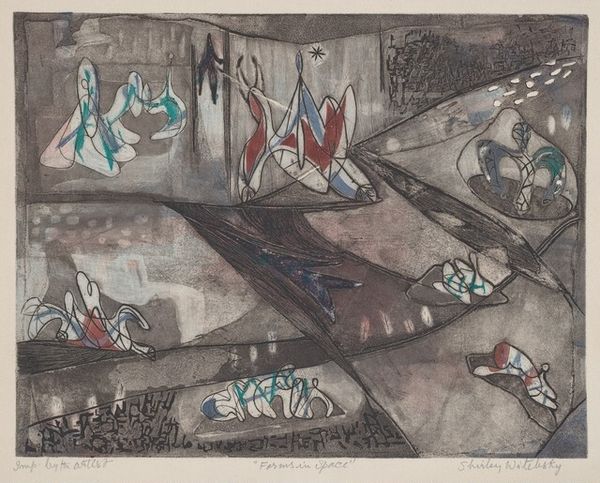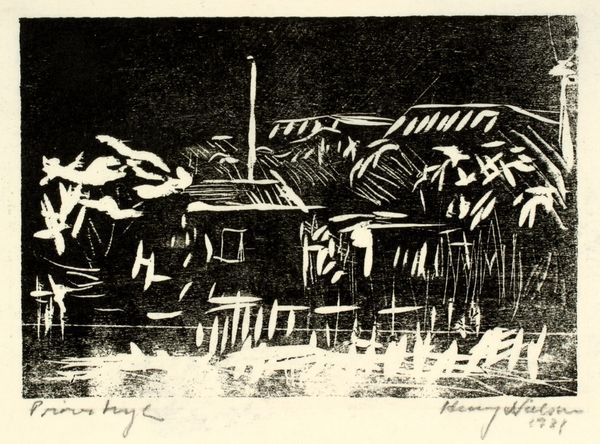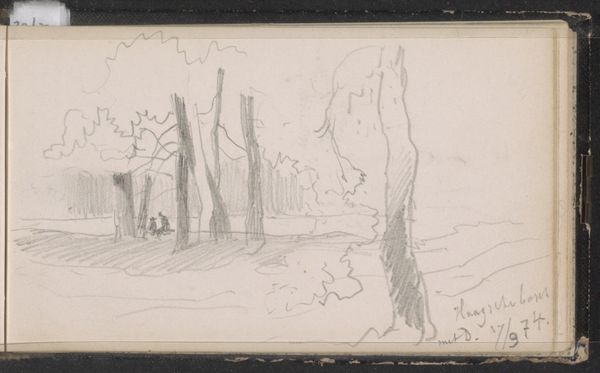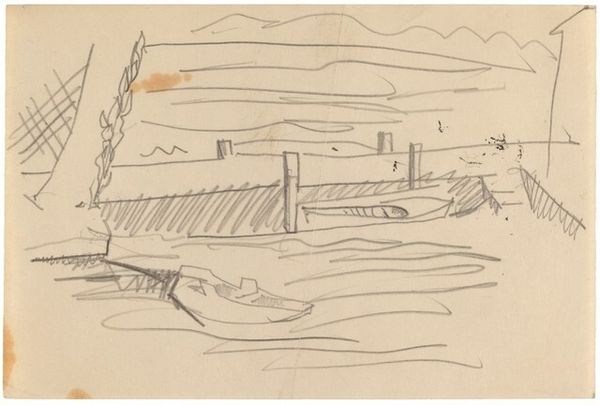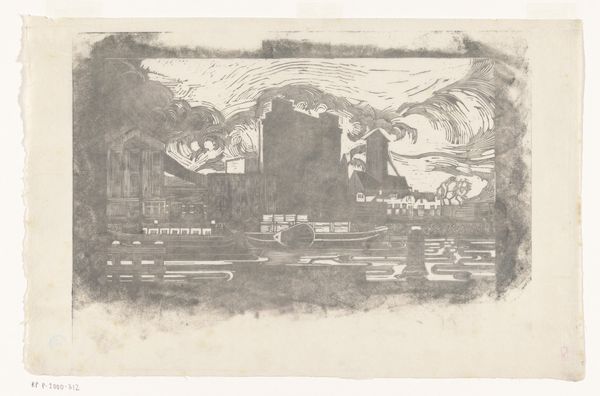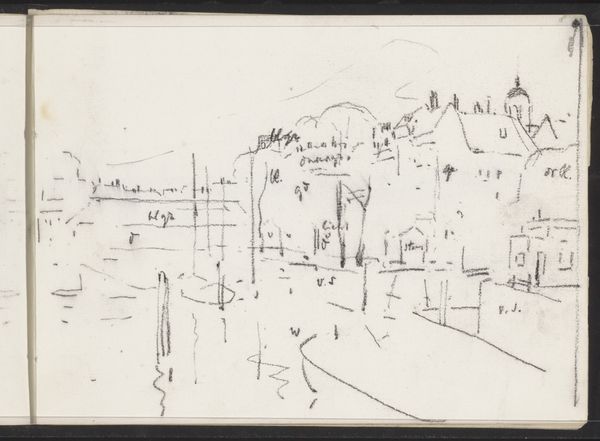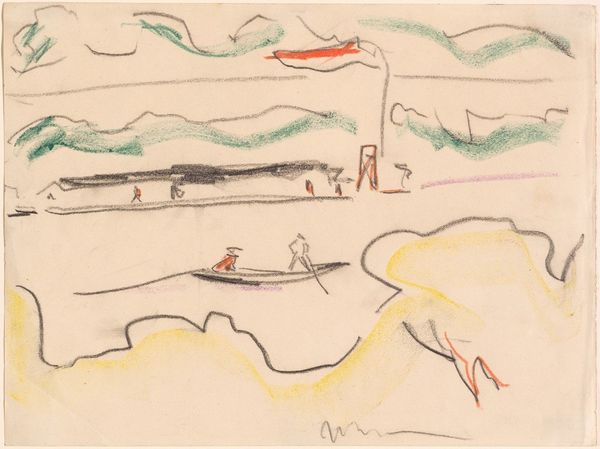
drawing, painting, watercolor
#
drawing
#
water colours
#
painting
#
oil painting
#
watercolor
#
abstraction
Copyright: National Gallery of Art: CC0 1.0
Curator: Looking at this untitled painting by Mark Rothko, created with oil painting, watercolor and drawing techniques, I am immediately struck by its stage-like composition. Editor: It feels almost theatrical. The dark background contrasting sharply with the brighter architectural elements evokes a sense of drama and unease, like something is about to happen, or perhaps already has, leaving this chaotic scene. Curator: Right. Rothko's career has a theatrical through-line that comes out clearly here. Let's situate the artwork in the larger socio-political forces shaping art at the time it was produced: it predates Rothko's signature color field paintings, a departure for an artist who explored surrealism as a form of protest early in his career. I wonder if this stage, like a modern theatre, served as an exploration of identity during moments of crises and societal unrest? Editor: I appreciate that point; in light of these interpretations, the precarious angles and incomplete forms throughout the work resonate with feelings of instability and the reconstruction of something destroyed. It is a physical, material representation of internal landscapes after the disaster of modernity, with people moving amongst broken geometries. What’s interesting, from my perspective, is how the imagery references backdrops or the material conditions of play settings—and how these may or may not frame individual liberty, the ability of a subject to make free and equitable choices. Curator: Absolutely. And think of the single figure stage right; that individual appears lost amidst the larger forces that surround them. A sense of alienation, perhaps even commentary on an existential human condition. Considering this composition and use of light and shadow within this visual context encourages conversations around alienation, and representation for disenfranchised members of society. Editor: Well, given the period in history in which this work likely would have been produced, one must wonder the extent to which these issues become both representational and generative in relation to artistic production itself. Curator: I'm drawn to how art allows the public to make this an object of interpretation in this exact manner. Editor: Exactly. It gives us all some clues, at the very least, towards where to begin!
Comments
No comments
Be the first to comment and join the conversation on the ultimate creative platform.
